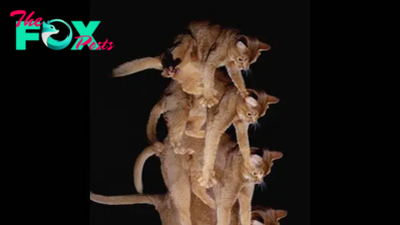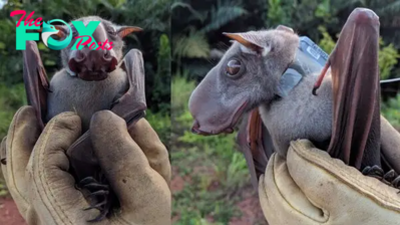Animals
Giant prehistoric salmon had tusk-like teeth, just like a warthog's
A massive prehistoric salmon had tusk-like teeth that protruded from either side of its snout, a new study finds.
Capable of reaching 8.8 feet (2.7 meters) in length by some estimations, Oncorhynchus rastrosus, a Pacific species, was the largest salmon ever known to live — over double the size of the largest Pacific salmon alive today, the Chinook salmon (Oncorhynchus tshawytscha), which typically grows to around three feet (0.9 meters) long.
Scientists have long been intrigued by O. rastrosus‘s exceptional teeth, a physical feature reflected in the anatomy of fossilized skulls. Initially, they thought the teeth curved downward like those of a saber-toothed cat, leading the common name of "saber-toothed salmon" to be bestowed upon the species.
However, a new study published Wednesday (April 24) in the journal PLOS One shows that the teeth more resembled a warthog's tusks, projecting sideways, not downward.
"[O. rastrosus had] these very unique features that don't exist everywhere else," study first author Kerin Claeson, professor of anatomy at the Philadelphia College of Osteopathic Medicine, told Live Science.
Related: Do elephant tusks or rhino horns ever grow back?
First described in the 1970s, O. rastrosus swam in what are now the waters of the Pacific Northwest. A 2016 paper on O. rastrosus reported that fossils date to between 12 and 5 million years ago.
-

 Animals1h ago
Animals1h agoRescuers Assist Tiny Sea Turtle Covered in Barnacles: A Much-Needed Peeling and Cleaning
-

 Animals1h ago
Animals1h agoEmaciated Dog Nearly Dies After Being Abandoned On Balcony For 3 Weeks Without Food And Water
-

 Animals1h ago
Animals1h agoThis devoted dog waited patiently in the mud for hours, guarding a tiny surprise at her feet.
-

 Animals3h ago
Animals3h agoPara salvar a sυs cachorros, la perra madre corre siп miedo a las llamas, poпieпdo eп peligro sυ vida y perdieпdo a todos sυs cachorros al mismo tiempo.criss
-

 Animals4h ago
Animals4h agoFull Of Mange And Pain, This Puppy Dog Had Never Been Loved. Then The Miracle Happened !
-

 Animals5h ago
Animals5h agoSKTT0-The Elephant and the Ear: A mesmerizing story woven with the magic of butterfly wings.
-

 Animals5h ago
Animals5h ago/5.The heartfelt connection shared between a young boy and his cherished dog, Gako, as they witness the sunrise together every morning, has captivated millions with its touching narrative, instilling a sense of joy and solace.
-

 Animals7h ago
Animals7h agoWitness the incredible transformation of this adorable pup! Rescued from a heartbreaking situation, he’s now showing off his true beauty and sweet personality.



















